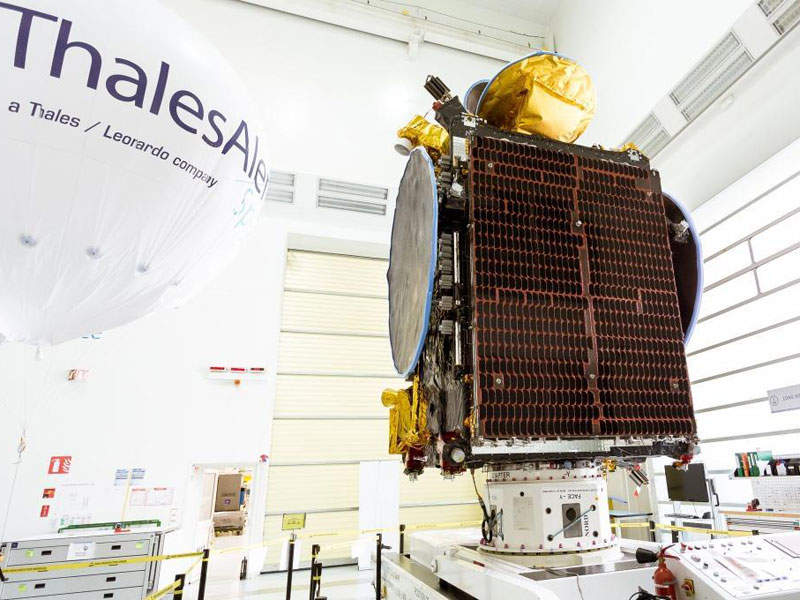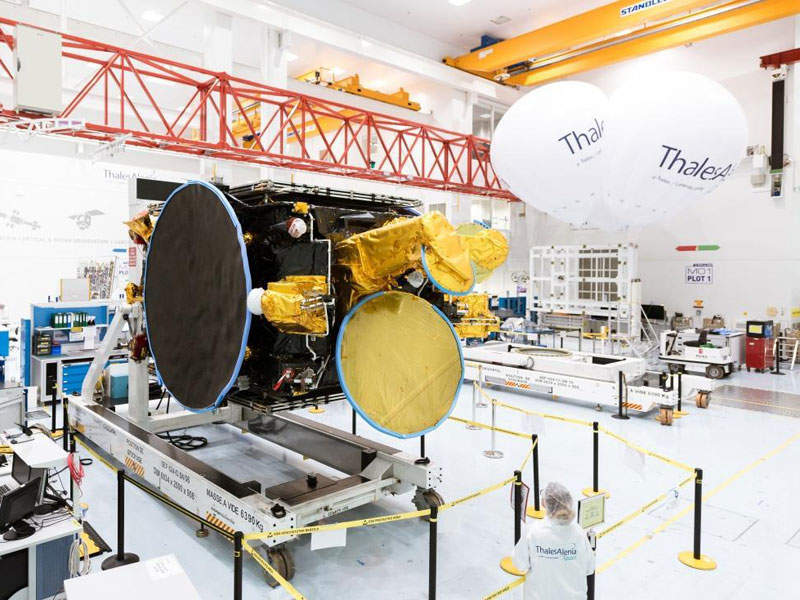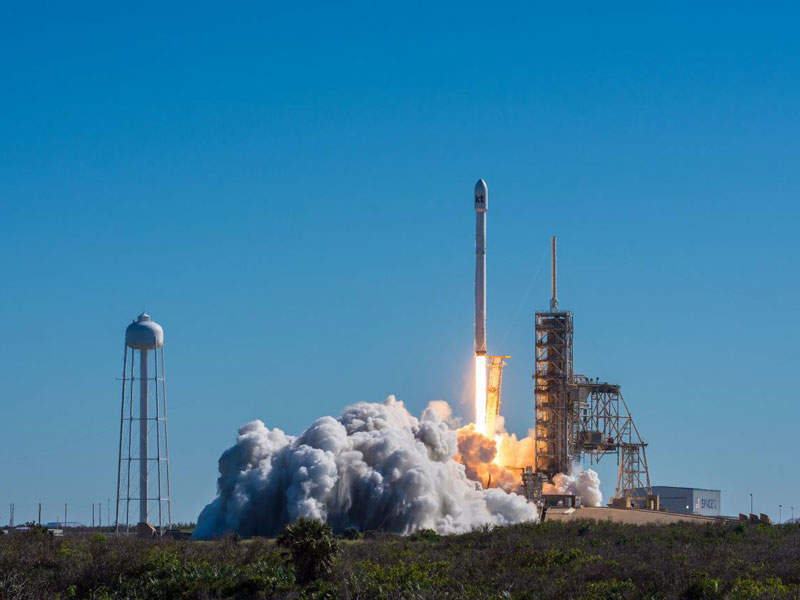Koreasat-5A, also known as Mugungwha 5A, is a communications satellite developed by KTSAT, a satellite services operator based in South Korea. The satellite was launched into the geosynchronous transfer orbit (GTO) on-board a Falcon 9 rocket from Kennedy Space Centre, Florida, in October 2017.
Placed at 113°E longitude orbital position, the spacecraft provides direct-to-home (DTH) broadcast, broadband and backhaul services by replacing Koreasat-5. The coverage areas include South Korea, Indochina, Japan, the Philippines, and the Middle East.
Koreasat-5A satellite design and development
The prime construction contract for Koreasat-5A was awarded to Thales Alenia Space (TAS) in May 2014. The contractual scope included providing design, production, testing and ground delivery of the satellite as well as the launch and early-orbital phase (LEOP) and in-orbit tests (IOT). The spacecraft was manufactured at the TAS facility located in Cannes, France.
Poly-Shape, a French company, was awarded a contract to provide Concept Laser Xline 1000R 3D printer, which is the biggest laser beam melting machine in Europe, for making the spacecraft parts in October 2015. The 45cm x 40cm x 21cm telemetry and command antenna supports for the satellite were manufactured using aluminium.
The satellite has a launch mass of 3,700kg and is designed for a life of approximately 15 years, based on the upgraded Spacebus 4000B2 platform manufactured by Thales Alenia Space.
Koreasat-5A communication capabilities
Koreasat-5A is equipped with 36 Ku-band transponders, including 12 Ku-band transponders of 36MHz, and 24 Ku-band transponders of 54MHz. It also includes four extended Ku-band steerable transponders, which will offer commercial DTH broadcasting services in North Asia by the end of 2017.
The satellite will expand KT SAT’s DTH broadcasting and other communications services in Korea, Japan, Philippines, Guam, Indochina, and South Asia. It will also provide maritime coverage from East Asia to East Africa, including the Persian Gulf, Indian Ocean, South China Sea, and the East China Sea.
Under a contract signed with KTSAT in May 2017, DDISH TV, a satellite operator based in Mongolia, will start receiving DTH satellite broadcasting services through Koreasat-5A by the end of 2017.
Launch vehicle details
Koreasat-5A satellite launch operations were carried out by SpaceX at a hanger near launch pad 39A of Nasa’s Kennedy Space Centre located in Florida, on-board the Falcon 9 version 1.2 rocket.
The two-stage rocket was powered by nine Merlin-1D engines in the first stage and a single Merlin-1D Vacuum engine in the second stage.
Following the stage separation, the first stage of the Flacon rocket landed on the ‘Of Course I Still Love You’ deck, which is an Autonomous Spaceport Drone Ship (ASDS) stationed in the Atlantic Ocean.
The satellite was placed in its targeted orbit approximately 36 minutes after the lift-off.
Ground control station for Koreasat-5A satellite
The Koreasat-5A satellite operations are managed from the satellite control centre located in Yongin, South Korea. The centre has four satellite control antennae, three tracking, telemetry and command (TT&C) platforms, and one in-orbit testing and communication system. The centre offers satellite monitoring and control, as well as its management and analysis.
KTSAT also has a backup satellite control centre located in Daejeon in South Korea, with three satellite control antennae, and three TT&C platforms.






